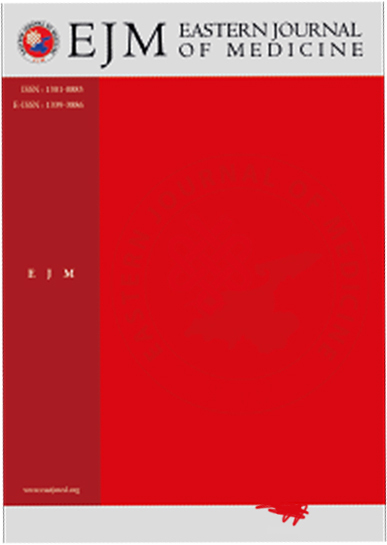EUS accuracy against MRCP for detection of pancreaticobiliary lesions
Mustafa Zanyar Akkuzu, Engin Altıntaş, Serkan Yaraş, Osman Özdoğan, Enver Ucbilek, Fehmi Ates, Orhan Sezgin, Ferzan Aydın, Hatice Rızaoğlu Balcı, Yaren DirikMersin University, Faculty of Medicine, Department of GastroenterologyINTRODUCTION: Pathologies such as stenosis, dilatation, stone, and tumor are detected by imaging methods. Clinical symptoms, laboratory and imaging methods that cause mechanical jaundice are reached. We aimed to compare the patients with MRCP and EUS in our clinic and to determine their superiority in diagnostic terms.
METHODS: The results of 135 patients who underwent MRCP and EUS together in the Hospital Gastroenterology Clinic of ×××× University Medical Faculty between 2010-2018 were compared and the results were compared. After reviewing the reports; stone, tumor and pancreatitis sensitivity data were evaluated and analyzed.
RESULTS: 71 (52.6%) of the patients were male and 64 (47.4%) were female. The mean age of males was 60.5 ± 15.49 and the mean age of females was 61.2 ± 14.25. The age range of our patients was 23-91. In 97 (71.85%) patients, MRCP and EUS were reported in the same way and both imaging methods gave the correct results. There were 38 (28.14%) patients with different diagnoses and the total cases with stone, tumor and pancreatitis were evaluated and compared. The sensitivity of EUS for the stone was 88.88% and the MRCP was 81.48%. The sensitivity of EUS was 92.45% and 66.03% for MRI and Tumor and IPMN. In pancreatitis, the sensitivity of EUS was 89.65% and MRCP was 72.41%.
DISCUSSION AND CONCLUSION: EUS is a better diagnostic tool for the diagnosis of choledocholithiasis, tumor and pancreatitis than MRCP.
Manuscript Language: English














